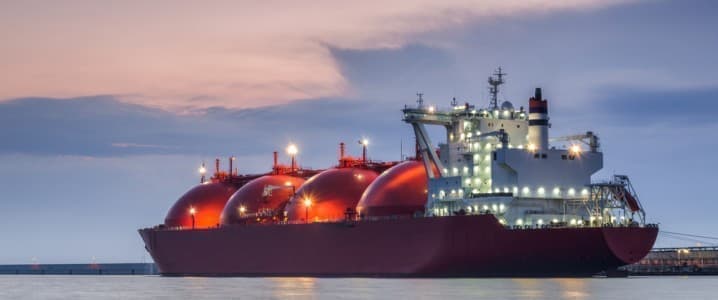
November in Europe is normally the start of heating season proper. Even with a prolonged summer and a soft start to the fall, by late November, winter temperatures drop, and the heating gets cranked up. And gas prices start climbing higher. Last year, Europe lucked out with a milder-than-usual winter. This year, things look different. For now, Europe’s gas storage caverns are full to the brim thanks to a steady flow of U.S. LNG. But now that peak consumption season has begun, demand will rise, just like demand in Asia.
And despite ample supply of LNG globally, prices could yet spike, potentially by a lot.The abovementioned ample supply has been the reason why LNG prices have softened in recent weeks. Yet the market’s—especially the European market’s—vulnerability to any occurrence that can influence prices was made crystal clear earlier this week when European benchmark prices jumped after the news broke of Houthis seizing a cargo ship in the Red Sea.
The ship was linked to an Israeli company, and because of this, it was widely seen as a sign of a possible escalation of the Middle Eastern war. Israel’s reaction was to blame Iran for the seizure, while Iran denied any involvement. Both sides used strong language in their respective statements. Following the news, gas prices in Europe added some 3%, while gas prices in the United States even shed a little, highlighting yet again the fundamental difference between being a self-sufficient producer of a commodity and being dependent on imports.
Yet even with a heightened geopolitical risk in the Middle East, some in the gas trading industry believe LNG prices are unlikely to go much higher, according to S&P Global. The Commodity Insights service of the company reported this week that some traders point to supply as the reason for only a limited impact of shipping news on LNG prices. Others, however, note that shipping news has become quite important for all sorts of commodities now that movement via the Panama Canal has been restricted, and movement via the Suez Canal is perceived to have become riskier because of the Israel-Hamas war.
The Panama Canal situation—a result of a prolonged drought that has reduced water levels in the canal—has already pushed freight rates higher for all vessels. Not all U.S. LNG cargo goes through the Panama Canal, but shipments for Asia do pass it. However, with the new restrictions in place, some, such as South Korean buyers, have opted to replace the Panama Canal route with one that passes through the Suez Canal. With the ship seizure in the Red Sea, some buyers may get nervous about this route, too.
Meanwhile, other Asian buyers of U.S. LNG are also looking for alternative routes as the limited movement in the key chokepoint between North and South America does not look like it would be resolved quickly. This would add to freight rates, too, even if the LNG supply in itself is plentiful. Speaking of supply, it may be plentiful, but as last year’s Freeport outage demonstrated, this abundance is one outage away from a disruption and a price spike.
Last June, Freeport LNG suffered an explosion that shut the facility down for the rest of the year. It only reopened in February this year. Freeport had accounted for a tenth of European LNG imports before the blast and played a big part in the summer gas price spike.With winter temperatures coming, then, gas prices could climb higher, at least in Europe, simply because of the spike in demand and despite full storage: withdrawals from this storage have already started as is usual for this time of the year. Global prices may be more resilient, but the upside risk remains due to the shipping challenges and the heightened disruption risk in the Middle East.
Source: https://oilprice.com
